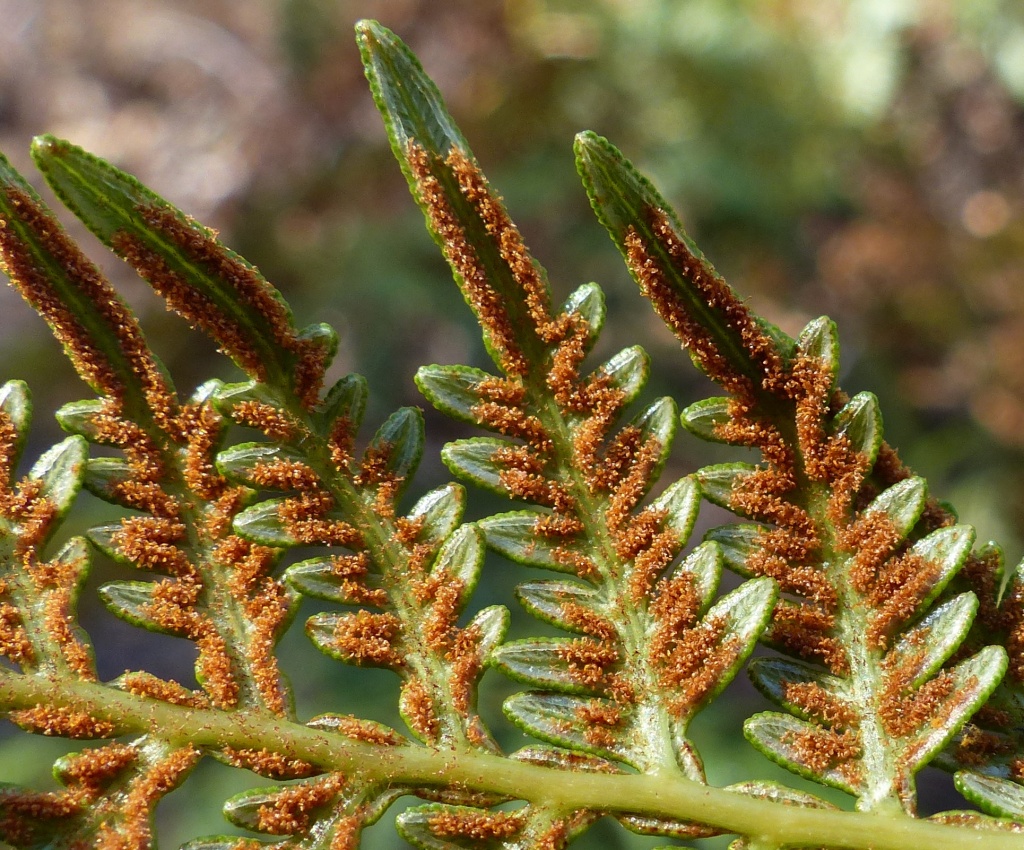Pteridium esculentum subsp. esculentum
Rhizome thick and woody, 5–15 mm diam., covered with dark red-brown hairs which are eventually shed. Fronds distant, erect and rigid, 30–250 cm long, harsh. Stipe long and woody, often red-brown, but colour variable, mainly glabrous, slightly shiny. Lamina 3–4-pinnate, wedge-shaped to triangular, dark green, paler below, older fronds glabrous above with fine hairs below. Rachises shallowly grooved, often appearing twisted; minor rachises with characteristic narrow, green lobes between pinnae. Pinnae subopposite or alternate, shortly stalked, distant and stiff, most with a stipule-like lobe near base; pinnules entire or with a few basal lobes, linear to narrowly oblong, decurrent, with tightly recurved margin; lower surface with numerous, appressed, fine white hairs (barely visible with hand lens) and some coarser, brownish hairs along midveins; veins sunken, midvein conspicuous, lateral veins forking early, impressed, imparting a finely scalloped appearance to the recurved margin. Sori almost continuous beneath membranous recurved margin.
LoM, Wim, GleP, Brid, VVP, VRiv, MuF, GipP, OtP, WaP, Gold, CVU, GGr, DunT, NIS, EGL, EGU, WPro, HSF, HNF, OtR, Strz, MonT, HFE, VAlp. The commonest and most widespread fern in Victoria, growing in a wide range of usually fairly open habitats, but avoiding poorly drained areas, and uncommon above about 1000 m.
An aggressive colonizer of disturbed areas, and difficult to control (even small pieces of rhizome may resume growth and its growth is stimulated by fire). The starchy rhizomes were used as food by Koories, but the young fronds contain a nerve toxin affecting stock and humans (however, the young fronds or 'fiddleheads' are eaten in countries such as Japan). Tannins in the fronds have been used in leather tanning. See also notes under Calochlaena dubia (Dicksoniaceae).
 Spinning
Spinning

